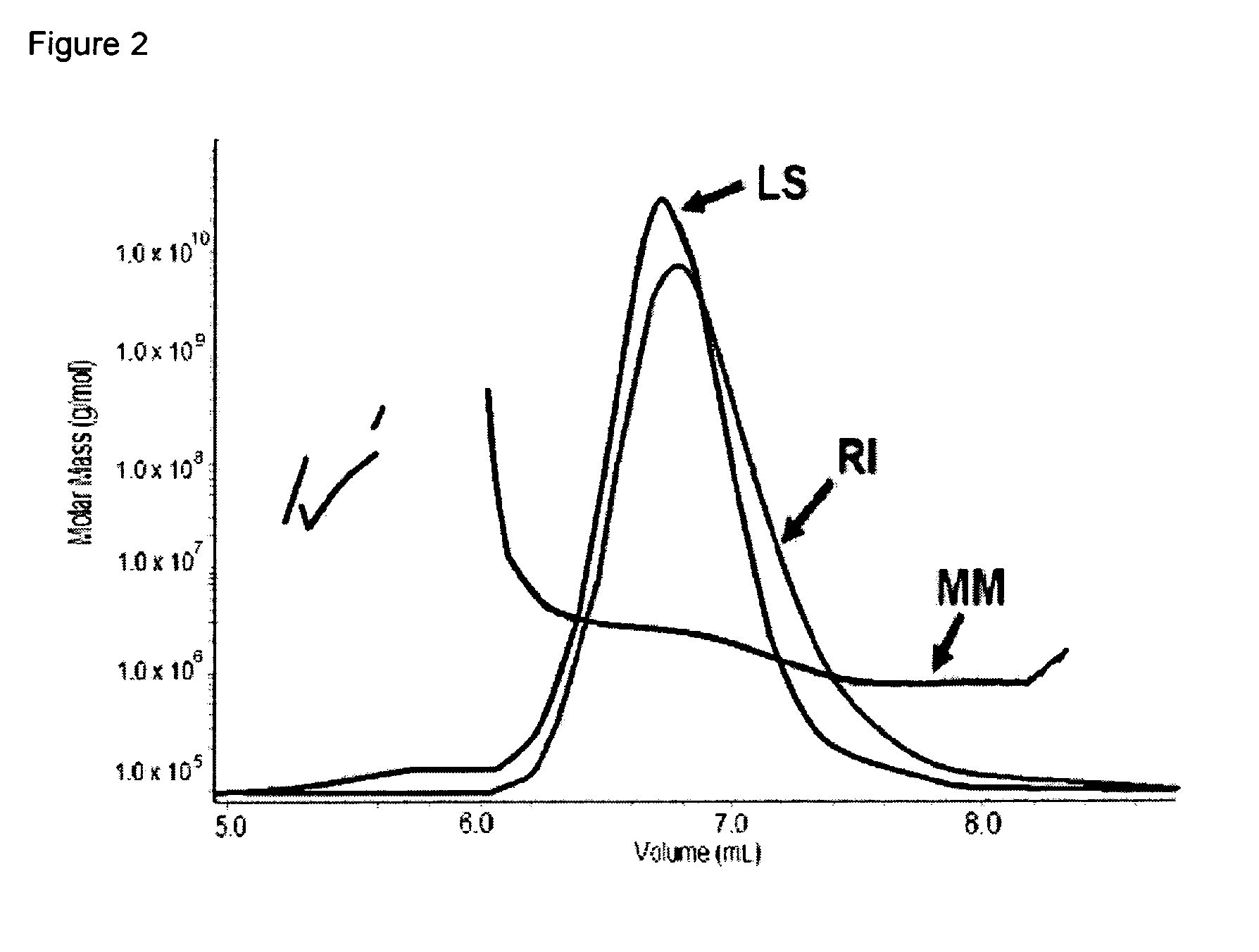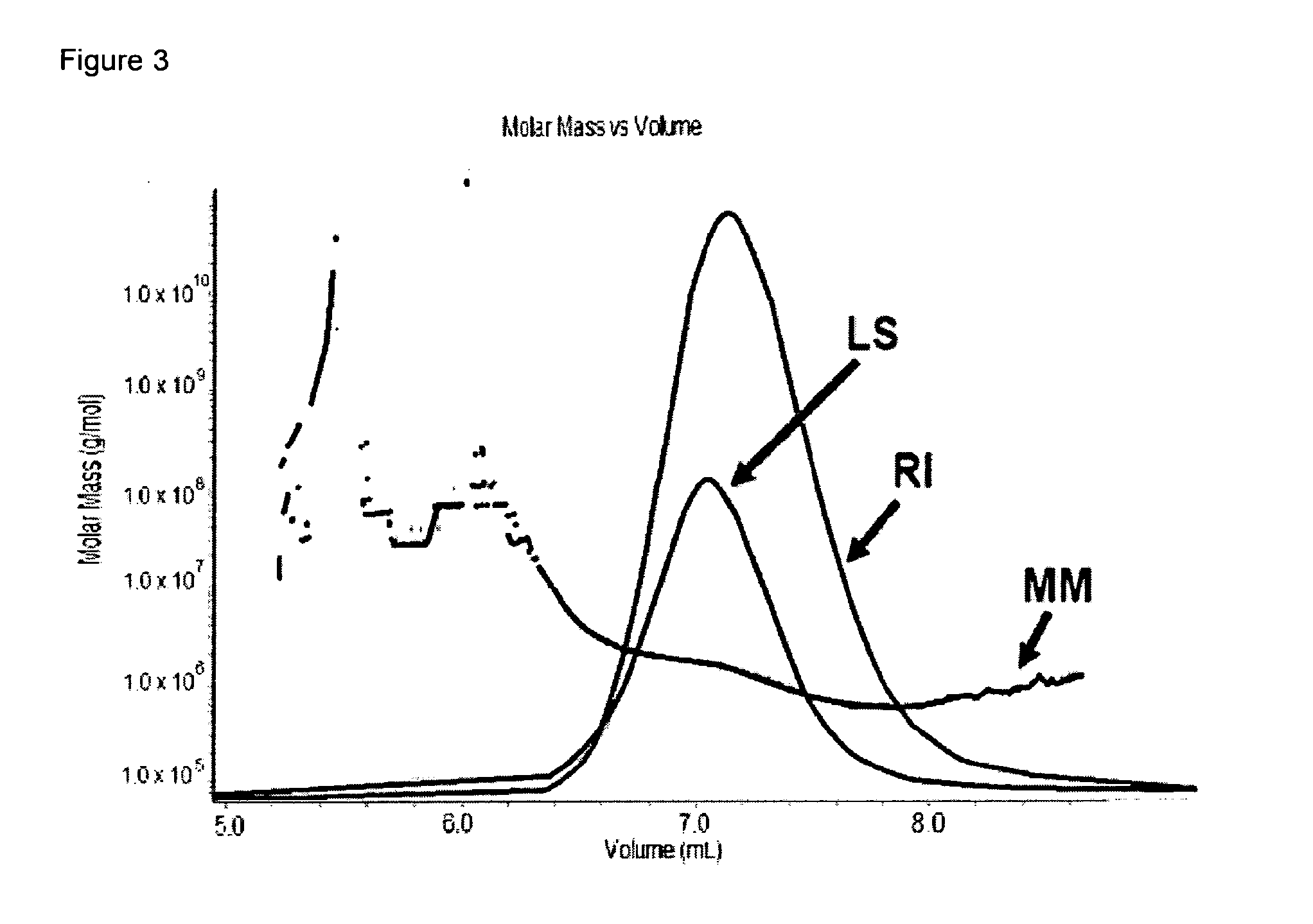Prame purification
a technology of prame and purification method, which is applied in the direction of antibody medical ingredients, tumor rejection antigen precursors, peptides, etc., can solve the problems of prame precipitation out of solution and unsuitability, and achieve the reduction of prame aggregation, and reducing the aggregation of proteins
- Summary
- Abstract
- Description
- Claims
- Application Information
AI Technical Summary
Benefits of technology
Problems solved by technology
Method used
Image
Examples
example 1
Characterisation of PRAME
[0101]The isoelectric point (IEP) of the PRAME antigen was determined on purified antigen solubilised in 5 mM Borate buffer pH 9.8-3.15% sucrose by electrophoretic mobility measurement and Zeta potential calculation with ZetaNano® from Malvern. The experimentally obtained value of 6.44 was very close to the value calculated from theoretical amino acid composition (6.41). As the pH of reconstituted vaccine in adjuvant system A (ASA) (Sorbitol) is 8.0, it is expected that the antigen, PRAME, and the CpG present will be globally negatively charged. Therefore, no electrostatic interaction was expected to occur between the two entities.
Material and method for IsoElectric Point (IEP) Determination:
[0102]Samples were diluted in 5 mM Borate buffer pH 9.8-3.15% sucrose, and the pH was adjusted to the desired pH with HCl and / or NaOH. The reported zeta potential is the average of 5 consecutive measurements. IEP is the pH at zero zeta potential in the m...
example 2
Evidence of Interaction with CpG
SDS-Page / WB Anti-PRAME (Additional Band 7 kDa Above Monomer)
[0120]SDS-PAGE analysis was conducted on Final Container reconstituted in ASA (Sorbitol). As illustrated in FIG. 6 / 21, additional band (band 1) is detected in Final Container at T0 (cf. lane 3). Based on analysis by densitometry (Biorad GS-700 Imaging Densitometer™), this additional band is characterized by a MW of 7 kDa higher than PRAME monomer band (band 2) and its intensity increases over time but remains below 4% (w / w versus monomer) 96 h post-reconstitution. Western Blot analysis using specific anti-PRAME antibody (FIG. 7 / 21) confirmed that the additional band is product-related and that its intensity slightly increases over time (lane 3 vs. 7).
Isothermal Titration Calorimetry
[0121]ITC measures directly the energy (heat) associated with a chemical reaction triggered by the mixing of two components. A typical ITC experiment is carried out by the stepwise injection of a solution containin...
example 3
Excipient Screening
[0151]Starting from purified antigen solubilised in 5 mM Borate pH 9.8-sucrose 3.15%, 25 excipients were assessed for the stabilization of the antigen size upon storage at +4° C. and at +22° C. The listing of the excipients and the concentrations tested are listed in the table 4
[0152]First selection of the candidates was performed through visual observation and size analysis by dynamic light scattering after 24 h storage at 22° C. (cf. table 4 and FIG. 15 / 21). Amongst all the excipients tested, only four of them allowed antigen size stabilization: SDS 0.01%, Sodium Docusate 0.01%, Sarcosyl 0.03% and CpG (from 20 μg / ml to 50 μg / ml)
TABLE 4Table 4: Listing and concentrations of the excipients tested for thestabilization of the antigen size and visual observation on purifiedantigen samples spiked or not with excipient after 24 h storage at 22°C. PB = Purified antigen in 5 mM Borate pH 9.8 - sucrose 3.15%.VisualobservationExcipientConcentrationunit24 h 22° C.L-glycine1...
PUM
| Property | Measurement | Unit |
|---|---|---|
| Molar density | aaaaa | aaaaa |
| Particle size | aaaaa | aaaaa |
| Particle size | aaaaa | aaaaa |
Abstract
Description
Claims
Application Information
 Login to View More
Login to View More - R&D
- Intellectual Property
- Life Sciences
- Materials
- Tech Scout
- Unparalleled Data Quality
- Higher Quality Content
- 60% Fewer Hallucinations
Browse by: Latest US Patents, China's latest patents, Technical Efficacy Thesaurus, Application Domain, Technology Topic, Popular Technical Reports.
© 2025 PatSnap. All rights reserved.Legal|Privacy policy|Modern Slavery Act Transparency Statement|Sitemap|About US| Contact US: help@patsnap.com



